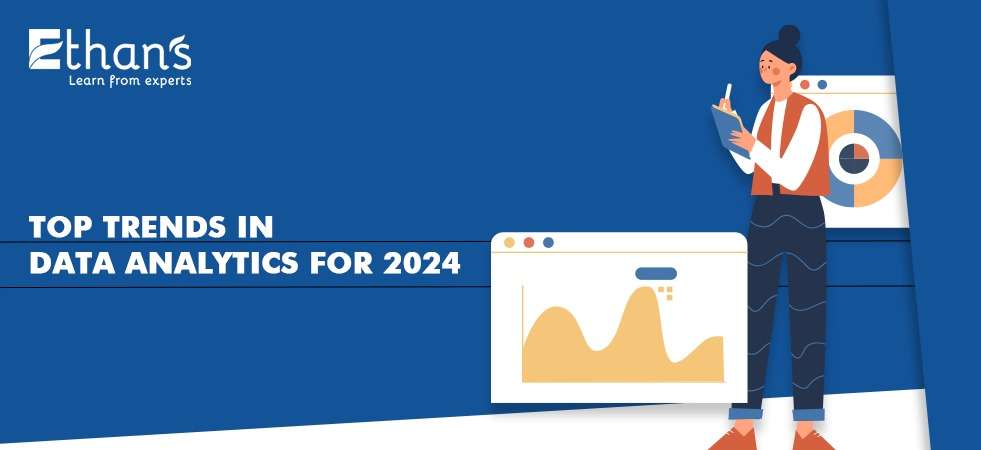In the ever-evolving landscape of data analytics, staying abreast of the latest trends is crucial for professionals and enthusiasts alike. As we step into 2024, the field is poised for significant advancements and innovations. Here are the top trends that will shape the world of data analytics in the coming year.
1. AI-Driven Analytics
Artificial Intelligence (AI) continues to be a driving force in data analytics. Machine Learning algorithms are becoming more sophisticated, enabling systems to learn and adapt to new data patterns. AI-driven analytics not only automate mundane tasks but also provide valuable insights, improving decision-making processes.
2. Exponential Growth of Big Data
As the volume of data generated daily continues to soar, the importance of managing and deriving insights from big data becomes even more critical. Technologies like Hadoop and Spark are expected to evolve, accommodating larger datasets and enhancing processing speed.
3. Edge Analytics
With the proliferation of Internet of Things (IoT) devices, edge analytics is gaining prominence. Analyzing data closer to the source reduces latency and allows for real-time decision-making. This trend is particularly relevant for industries like healthcare, manufacturing, and logistics.
4. Data Privacy and Ethics
As data becomes more valuable, concerns about privacy and ethical use are escalating. In 2024, there will be an increased focus on developing frameworks and policies to ensure responsible data usage. Professionals in data analytics will need to navigate the complexities of compliance and ethical considerations.
5. Augmented Analytics
Augmented analytics integrates machine learning and natural language processing to enhance human decision-making. By automating insights generation, data preparation, and model development, augmented analytics empowers users with actionable information, even if they lack extensive data science expertise.
6. Blockchain for Data Security
Blockchain technology is not just for cryptocurrencies; it’s making waves in data analytics too. With its decentralized and secure nature, blockchain is increasingly being adopted to ensure the integrity and security of data throughout its lifecycle.
7. Explainable AI (XAI)
As AI systems become more complex, there’s a growing need for transparency and explainability. Explainable AI (XAI) ensures that the decisions made by AI models are understandable and interpretable, addressing concerns about biased algorithms and opaque decision-making.
8. DataOps
DataOps, a collaborative data management practice, is gaining traction to improve the communication and integration of data scientists, analysts, and other data professionals. It focuses on streamlining and automating the data pipeline, making it more agile and efficient.
9. Real-Time Analytics
The demand for real-time analytics is on the rise, especially in industries like finance, e-commerce, and cybersecurity. Technologies enabling instant data processing and analysis will be crucial for organizations looking to make split-second decisions based on the latest information.
10. Upskilling and Training
With the rapid evolution of data analytics, upskilling, and continuous training are essential for professionals to stay competitive. Institutes like Ethans play a pivotal role in providing courses on the latest tools, technologies, and methodologies in data analytics and data science.
As we delve into 2024, these trends will shape the future of data analytics, presenting both challenges and opportunities. Professionals and organizations that embrace these trends and adapt to the changing landscape will undoubtedly be at the forefront of innovation in the field. Stay tuned as Ethans continues to empower individuals with the knowledge and skills needed to thrive in the dynamic world of data analytics.
Ready to Dive Deeper into Tech Trends?
Explore the dynamic world of data analytics and discover the top trends shaping the future. But why stop there? If you’re eager to secure a high-paying tech job in 2024, check out our latest blog on Investing in Your Future: High-Paying Tech Jobs in 2024.
Your future in tech awaits. Start your journey with Ethans!
1. What is the significance of AI-driven analytics in 2024?
Answer: AI-driven analytics is crucial in 2024 as it empowers systems to learn and adapt to new data patterns. This not only automates routine tasks but also enhances decision-making processes by providing valuable insights derived from complex datasets.
2. How will the exponential growth of big data impact the field of data analytics?
Answer: The exponential growth of big data necessitates advancements in technologies like Hadoop and Spark to accommodate larger datasets and improve processing speed. Managing and deriving insights from big data will become even more critical in 2024.
3. Why is edge analytics gaining prominence, especially in IoT-related industries?
Answer: Edge analytics is becoming increasingly important due to the proliferation of IoT devices. Analyzing data closer to the source reduces latency, allowing for real-time decision-making in industries such as healthcare, manufacturing, and logistics.
4. How does explainable AI (XAI) address concerns about biased algorithms and opaque decision-making?
Answer: Explainable AI (XAI) ensures transparency and interpretability in AI systems. It addresses concerns about biased algorithms by making the decisions of AI models understandable, providing insights into the factors influencing the outcome.
5. Why is upskilling and training essential in the rapidly evolving field of data analytics?
Answer: Upskilling and continuous training are crucial because of the rapid evolution of data analytics. Staying competitive requires professionals to acquire the latest tools, technologies, and methodologies. Training institutes like Ethans play a pivotal role in empowering individuals with the necessary knowledge and skills.

